Welcome to the captivating realm of burning in witchcraft, where fire serves as a powerful tool for transformation, cleansing, and manifestation. This ancient practice, deeply rooted in tradition, offers a versatile way to connect with elemental energy, purify spaces, and amplify intentions. Whether you’re a novice or an experienced practitioner, burning rituals provide a meaningful method to harness magic, promoting growth and balance in your spiritual journey.
What is Burning in Witchcraft?
Burning in witchcraft is a sacred practice that harnesses the transformative power of fire to release energy, purify spaces, and manifest intentions. It involves the deliberate use of flames to consume herbs, resins, or other materials, releasing their essence into the air. This ritual is often used for cleansing, protection, and spiritual growth, allowing practitioners to connect with elemental forces and amplify their magic. Whether through smudging, candle work, or bonfires, burning is a versatile and deeply symbolic act that bridges the physical and spiritual realms, helping witches focus their will and create meaningful change in their lives and environments.
Historical Background of Fire Magic
Fire magic has ancient roots, with civilizations worldwide revering flames as a primal, transformative force. From sacred bonfires to ritualistic pyres, fire has long symbolized purification, protection, and spiritual renewal. In many cultures, fire was believed to bridge the earthly and divine realms, serving as a medium for communication with ancestors and deities. Ancient druids, for instance, used fire in seasonal rituals to ensure fertility and prosperity, while Native American tribes employed smudging ceremonies to cleanse and protect. Similarly, African diasporic traditions incorporated fire into rituals for healing and warding off negative energies. These practices, passed through generations, have evolved into modern witchcraft, where fire remains a potent symbol of transformation, renewal, and spiritual connection, continuing to inspire rituals and spells that honor its ancient, elemental power.
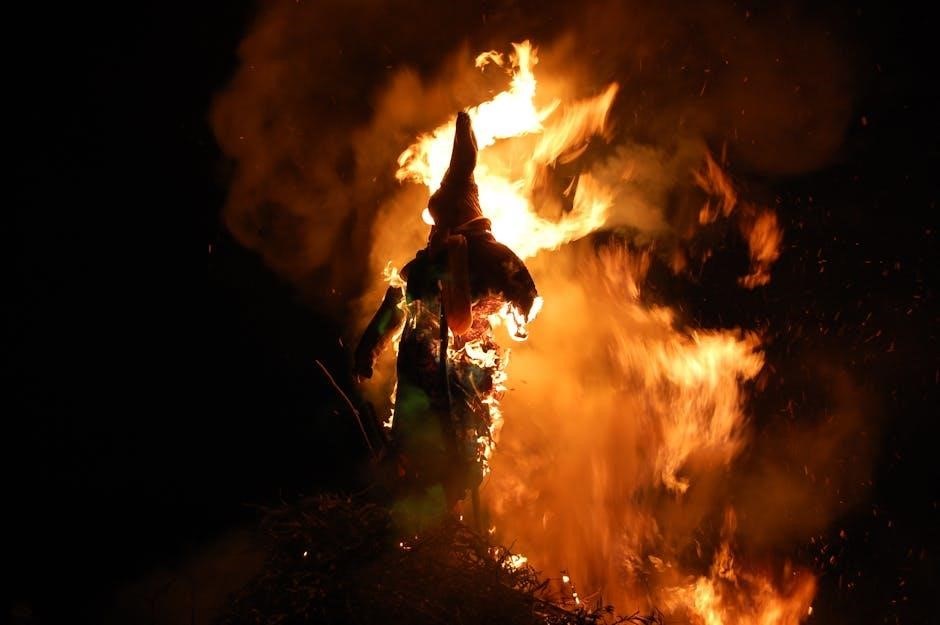
Safety Precautions
Ensure a safe environment by keeping water nearby, ventilating spaces, and avoiding flammable materials. Always prepare your area carefully to prevent accidents and honor the power of fire respectfully.

Essential Safety Tips
To practice burning safely, always prepare your space thoroughly. Keep a bowl of water or a fire extinguisher nearby to handle emergencies. Ensure good ventilation to prevent smoke buildup and avoid inhaling harmful fumes. Never leave burning items unattended, and keep flammable materials like curtains or rugs away from the flame. Use fire-safe containers or cauldrons, and ensure they are placed on stable, heat-resistant surfaces. Avoid burning in areas with low ceilings or near open windows to minimize fire hazards. Be mindful of your physical and mental state; never perform fire rituals when tired or under the influence of substances. Always extinguish flames completely before leaving the room. By prioritizing these precautions, you can harness the power of fire safely and respectfully in your witchcraft practice.
Preparing Your Space
Creating a sacred and safe environment is crucial before performing any burning rituals. Begin by decluttering your space to ensure a clear flow of energy. Cleansing the area with sage, sweetgrass, or palo santo can help remove negative energies and purify the atmosphere. Set a clear intention for your ritual, as this focus will guide the energy of your practice. Place any necessary tools, such as candles, herbs, or fire-safe containers, in a centralized and accessible location. Consider using symbols, like a pentagram or sacred geometric patterns, to enhance the spiritual significance of your space. Finally, ensure all flammable materials are removed, and keep a fire extinguisher or water source nearby. By thoughtfully preparing your space, you create a conducive environment for meaningful and effective burning rituals.
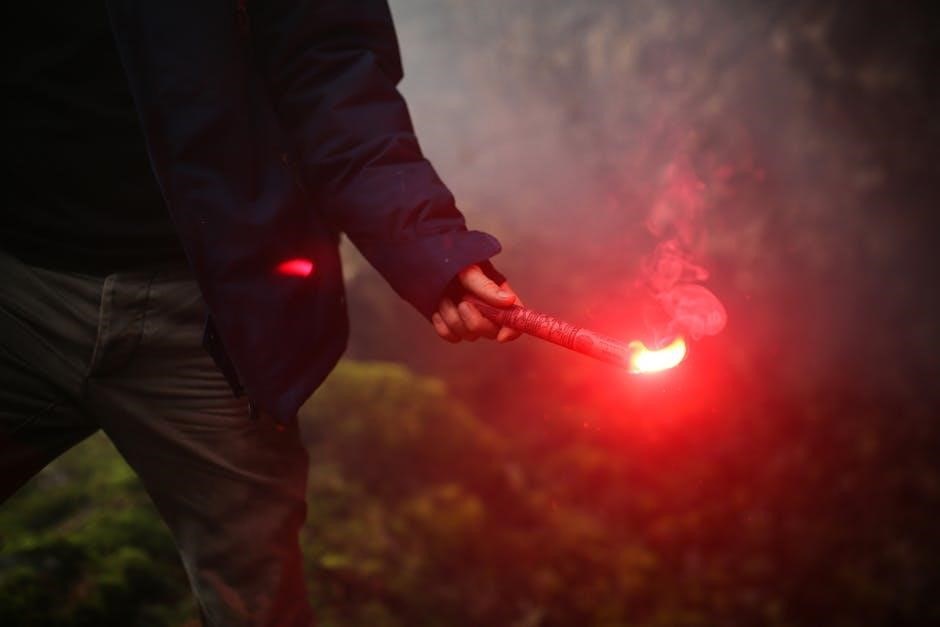
Types of Burning
Burning in witchcraft encompasses various practices, including herbal burning for purification and candle magic for focused intentions. These methods harness fire’s transformative power to manifest change and harmony.
Herbal Burning
Herbal burning, a cornerstone of witchcraft, involves igniting herbs to release their magical properties. This practice purifies spaces, attracts positive energy, and amplifies spells. Common herbs include sage for cleansing and lavender for peace. Each herb carries unique vibrations, aligning with specific intentions like protection or healing. To enhance rituals, witches combine herbs or blend with resins like frankincense. Safety is crucial—use fireproof containers and keep flammable materials away. Burning herbs connects modern witches to ancient traditions, honoring nature’s power. This versatile technique adapts to various magical goals, making it a timeless and potent tool in a witch’s arsenal.
Candle Magic and Flame Work
Candle magic is a powerful form of fire witchcraft that harnesses the transformative energy of flames. Candles serve as focal points for intentions, symbolizing the element of fire and its purifying, transformative properties. Practitioners often use colored candles, as hues like red, green, and blue align with specific goals—such as passion, prosperity, or healing. The ritual involves anointing the candle with magical oils, carving symbols, and charging it with intention before burning. As the flame consumes the wax, it represents the release of energy into the universe, manifesting desires or clearing negativity. Visualization and willpower are key, as the witch channels their intent into the fire. This practice is both intimate and effective, making it a beloved tool in modern witchcraft.
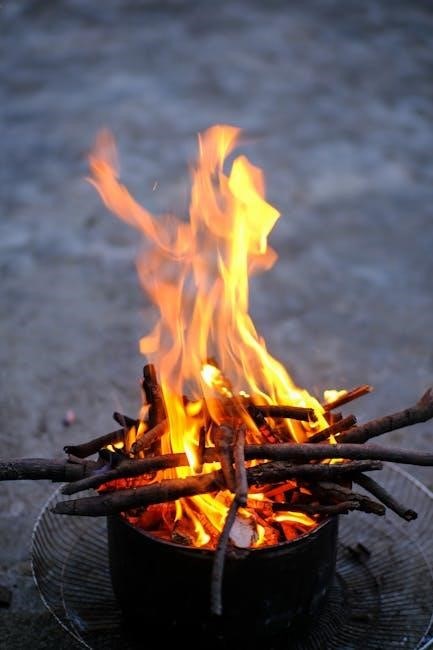
Rituals
Rituals in burning involve structured practices combining intention, symbolism, and energy work. They create sacred spaces for transformation, often involving fire, timed with lunar phases or astrological events.
Cleansing and Purification
Burning rituals for cleansing and purification are cornerstone practices in witchcraft, designed to remove negative energy and restore balance. These rituals often involve sacred fires, smudging herbs like sage or lavender, and intentional visualization. Fire symbolizes transformation, purifying spaces, objects, or people by consuming impurities. Practitioners may recite incantations or chants to amplify the effect, while smoke carries prayers and intentions to the universe. Cleansing rituals are typically performed during waning moons or at the start of a new cycle, marking renewal. Proper preparation, such as consecrating tools or casting a circle, ensures the ritual’s efficacy. Through these practices, witches harness fire’s powerful energy to create a clean, sacred environment for further magical work.
- Use herbal smoke for purification.
- Visualize fire absorbing negativity.
- Perform during waning moons for renewal.
Protection and Banishing
Protection and banishing rituals are powerful ways to safeguard energy and repel negativity using fire. These practices involve burning specific herbs, resins, or candles to create a shield against harmful influences. For protection, witches often burn rowan, cedar, or dragon’s blood, while banishing rituals may use sulfur or blackthorn to drive out unwanted energies. Fire symbolizes transformation, turning negativity into ash and purifying the space. Chants, spells, or prayers are spoken to reinforce intentions, ensuring the fire’s energy aligns with the desired outcome. These rituals are particularly effective during full moons or when dealing with persistent negative forces.
- Use fire to repel negative energies.
- Burn protective herbs like rowan or cedar.
- Visualize flames absorbing and neutralizing threats.
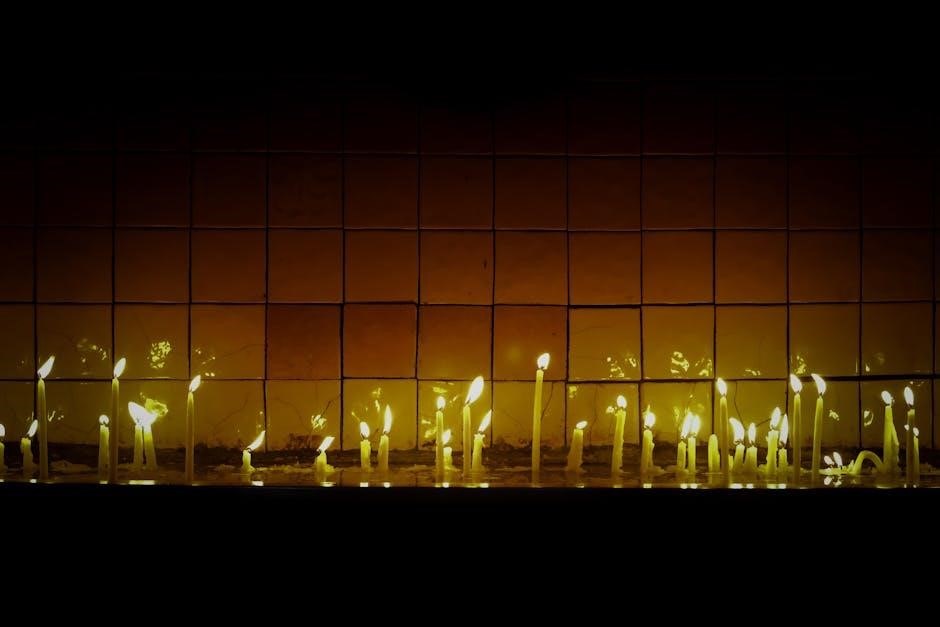
Tools of the Craft
Essential tools for burning rituals include cauldrons, fire pits, wands, and athames. These items channel and control fire energy, enhancing spellcasting and magical intentions effectively.
Cauldrons and Fire Pits
Cauldrons and fire pits are central tools in fire magic, symbolizing transformation and purification. Cauldrons, often made of cast iron or ceramic, are used for burning herbs, incense, or resins, releasing their magical properties into the air. Fire pits, larger and more communal, are ideal for outdoor rituals, creating a focal point for energy and intention. Both tools require careful preparation, ensuring they are heat-safe and placed on fireproof surfaces. Historically, cauldrons were associated with witchcraft and alchemy, representing the womb of transformation. Today, they remain powerful symbols, aiding in cleansing, protection, and manifestation rituals. Regular cleaning and consecration are essential to maintain their magical potency and prevent negative energy buildup. These tools bridge ancient practices with modern witchcraft, embodying the elemental force of fire.
Wands and Magical Tools
Wands and magical tools are essential in fire magic, serving as extensions of the practitioner’s will and intent. Wands, often crafted from wood, crystal, or metal, channel energy and direct it toward specific goals during burning rituals. Other tools, like athames or staffs, may also be used to manipulate energy and consecrate the space. These tools are typically charged with the practitioner’s intent before use, ensuring alignment with the desired outcome. While tools enhance the ritual experience, they are not a substitute for the practitioner’s focus and willpower. Proper care and cleansing of magical tools maintain their effectiveness and prevent stagnant energy. In modern witchcraft, these tools symbolize the connection between the practitioner and the elemental forces, particularly fire, amplifying the power of burning rituals and spells;

Spells and Intentions
Burning is integral to spells, using fire to manifest change and transform energy. Clear intentions guide the process, whether attracting positivity or releasing negativity. Focused willpower enhances the magic’s effectiveness, ensuring desired outcomes align with the practitioner’s goals. This ancient practice harnesses fire’s primal power to amplify spells and intentions.
Attraction and Manifestation
Burning is a powerful tool for attraction and manifestation, leveraging fire’s transformative energy to draw desired outcomes. By focusing intentions, practitioners can magnetize abundance, love, or success. Herbs like cinnamon and rose petals are often burned to attract prosperity and romance, while bay leaves symbolize wishes. Candles, particularly green or pink ones, are used in rituals to manifest wealth or love. The act of writing intentions on paper and burning them amplifies their release into the universe. Timing, such as during the waxing moon, enhances effectiveness. Clear visualization and positive affirmations strengthen the spell, aligning energy with the desired result. This practice bridges the physical and spiritual, turning desires into reality through fire’s purifying power.
Banishment and Release
Burning is a potent method for banishment and release, allowing practitioners to shed negative energies, habits, or influences. This practice involves using fire to symbolize the destruction of what no longer serves. Common techniques include burning herbs like sage or patchouli to purify and drive out negativity. Writing down unwanted patterns or entities on paper and burning them can signify release. Candles, particularly black ones, are used to absorb and banish dark energies. Chanting or visualizing the fire consuming the unwanted energy reinforces the intention. Timing rituals during the waning moon enhances banishment effects. This process not only clears space but also liberates the practitioner from emotional or spiritual burdens, fostering renewal and balance.

Common Mistakes to Avoid
Burning is a potent method for banishment and release, often involving herbs like sage, patchouli, or written intentions on paper, and candles like black ones, timed during the waning moon for enhanced effects.
Typical Errors in Fire Magic
Practitioners often make avoidable mistakes when working with fire magic. One common error is rushing rituals without proper preparation, leading to unpredictable outcomes. Many forget to ground and center themselves before igniting flames, disrupting the balance of energy. Ignoring safety protocols, such as keeping water nearby or using appropriate containers, can result in dangerous situations. Others overcomplicate spells, losing focus on clear intentions. Using the wrong tools, like synthetic materials or uncharged herbs, can diminish the ritual’s effectiveness. Additionally, some neglect to respect the element of fire, treating it as a tool rather than a powerful force. These errors highlight the importance of mindfulness, preparation, and reverence when engaging in fire magic.
Learning from Mistakes
Mistakes in fire magic are inevitable but serve as valuable learning opportunities. Reflecting on errors helps refine techniques and deepen understanding. Keeping a journal to document what went wrong and how it was resolved fosters growth. For instance, if a spell fizzled due to unclear intentions, practice clarifying goals before future rituals. Examining root causes, like improper tool preparation or neglecting safety steps, ensures similar errors are avoided. Embrace a mindset of continuous improvement, viewing each misstep as a chance to refine your craft. Over time, these lessons enhance skill and confidence, transforming challenges into stepping stones for mastery. Learning from mistakes is not just about correction but about evolving as a practitioner.

Advanced Techniques
Mastering intricate rituals, precise timing, and rare material combinations elevates fire magic. Aligning with celestial events enhances energy manipulation, deepening spell efficacy and intentional transformation through practiced skill.
Complex Rituals and Ceremonies
Complex rituals and ceremonies in fire magic involve intricate planning and execution. These advanced practices often require precise timing, such as aligning with celestial events or seasonal shifts. Rare herbs, resins, and magical tools are typically used to amplify the intention. Rituals may include creating elaborate sigils, chants, or invocations to channel powerful energies. Advanced practitioners often incorporate energy manipulation techniques, such as raising and directing currents of fire energy for specific outcomes. These ceremonies may involve calling upon deities, ancestors, or elemental spirits to aid in manifestation or transformation. The process demands focus, discipline, and a deep understanding of fire’s symbolic and literal power. Such rituals are not for the faint of heart, as they require significant preparation and emotional resilience. They are a testament to the depth and richness of fire magic, offering profound results for those willing to invest the effort.
Energy Manipulation
Energy manipulation in fire magic is an advanced practice that involves controlling and directing the raw power of flames to achieve specific outcomes. This technique requires a deep understanding of energy flow and the ability to harness it through visualization, chants, or physical gestures. Witches often use burning as a focal point to channel and transform energy, aligning it with their intentions. By manipulating the intensity, color, and movement of the flames, practitioners can influence the energy’s frequency and purpose. This practice is commonly used for transformation, healing, or protection. Mastery of energy manipulation allows witches to amplify their spells and create profound shifts in their environment. It demands precision, focus, and a strong connection to the elemental forces of fire, making it a powerful tool for experienced practitioners.
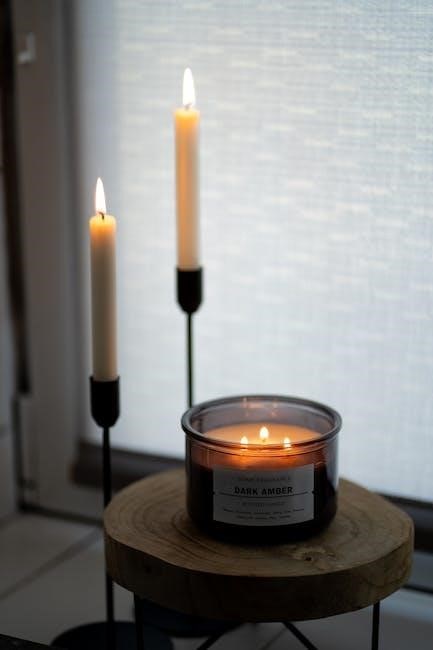
Cultural and Historical Context
Burning practices in witchcraft trace back to ancient rituals, symbolizing transformation and purification across cultures. Fire’s dual role as destroyer and creator has shaped its magical significance historically.
Ancient Practices
Ancient cultures revered fire for its transformative power, using it in rituals for purification, divination, and spiritual connection. Early civilizations, such as the Egyptians and Greeks, incorporated burning into religious ceremonies, offering herbs and incense to deities. Fire symbolized purification, as seen in the Greek ritual of “katharsis,” where smoke cleansed the soul. Indigenous cultures worldwide used burning in sacred ceremonies to honor ancestors and restore balance. These practices laid the groundwork for modern witchcraft’s use of fire, emphasizing its dual role as both destroyer and renewer. By studying ancient traditions, witches can deepen their understanding of fire’s magical significance and align their practices with timeless principles.
Modern Applications
Modern witchcraft has adapted ancient burning practices to fit contemporary needs and lifestyles. Many witches today use fire magic for personal growth, energy clearing, and spellcasting. Practices like smudging with sage or palo santo are popular for cleansing spaces and people. Candle magic has evolved, with witches using specific colors and intentions to manifest goals. Herbal burning remains a staple, with modern practitioners blending traditional herbs with essential oils for enhanced effects. Urban witches often adapt fire rituals to small spaces, using safer alternatives like charcoal disks or electronic diffusers. The core principles of transformation and renewal remain intact, proving fire’s timeless relevance in magical work. This blend of tradition and innovation keeps burning rituals dynamic and accessible for modern practitioners.
Fire remains a powerful tool in witchcraft, offering versatility for transformation, protection, and manifestation. Always prioritize safety and intention, as they are crucial to successful burning practices.
Final Thoughts
Fire magic is a profound and transformative practice, offering witches a powerful way to manifest change and connect with ancient energies. Burning rituals, whether through herbs, candles, or other tools, require respect, intention, and mindfulness; Always honor the element of fire, ensuring safety and ethical use. As you explore this craft, remember that fire is both a creator and a destroyer, symbolizing renewal and release. Trust in your abilities, stay attuned to your intentions, and embrace the wisdom passed down through generations. With patience and practice, you’ll harness the full potential of burning in your witchcraft journey, weaving its magic into your life and rituals.
Encouragement for Practitioners
Embrace your journey with fire magic wholeheartedly, trusting in its transformative power. Remember, every spell, ritual, or burning practice is a step toward growth and connection with the craft. Don’t be discouraged by setbacks—mistakes are opportunities to learn and refine your skills. Celebrate small victories, like mastering a simple candle spell or confidently using herbs for cleansing. Consistency and patience are key; magic unfolds over time. Trust in your intuition and the ancient wisdom guiding you. Whether you’re a novice or an experienced practitioner, know that your dedication honors the craft. Keep exploring, experimenting, and believing in your ability to weave meaningful change through fire. The journey is as rewarding as the destination.



0 Comments